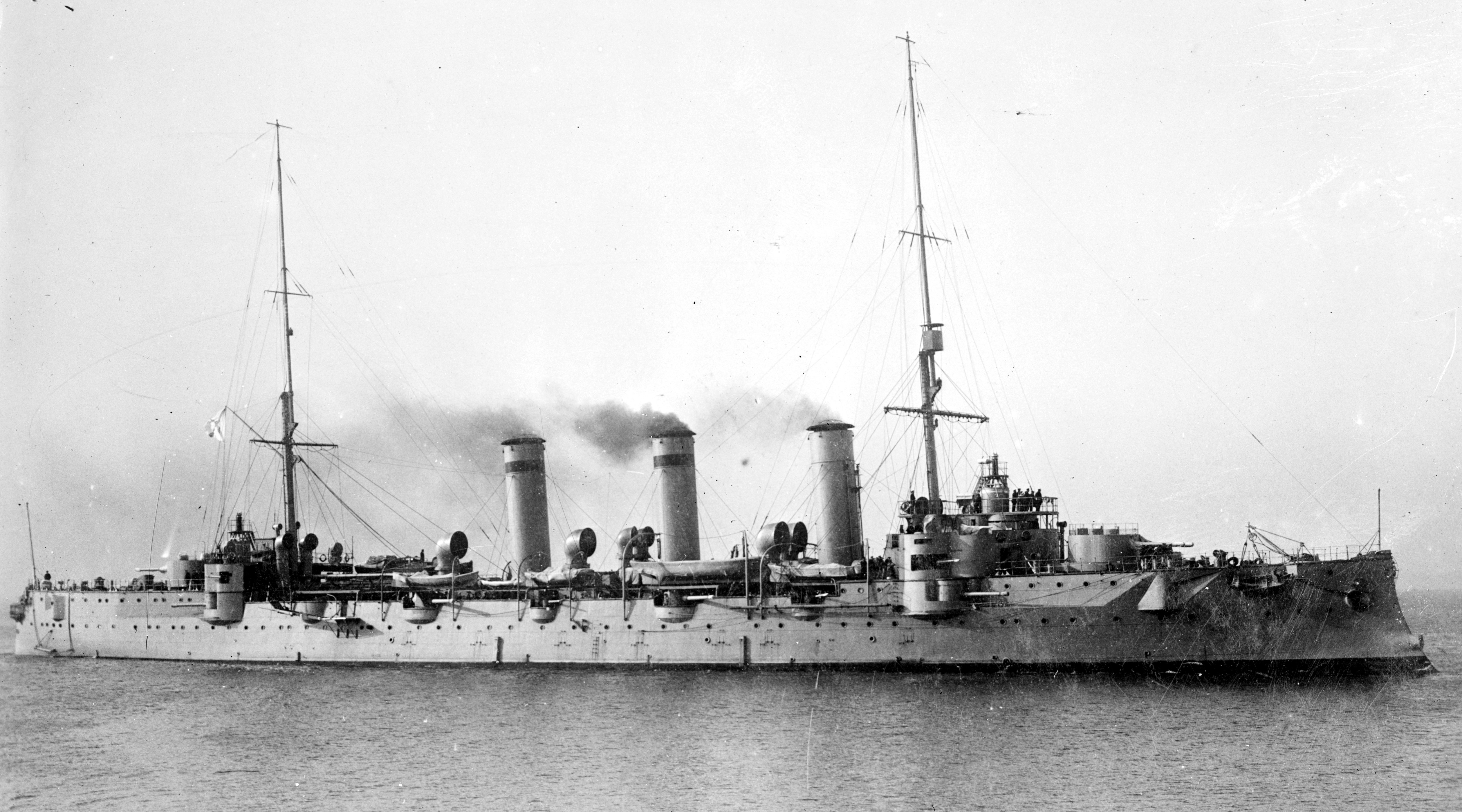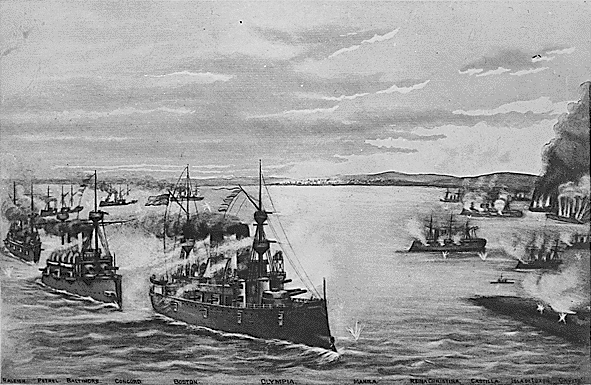|
Spanish Gunboat Callao
''Callao'' was a ''Samar''-class gunboat of the Spanish Navy which served in the Spanish fleet from 1888 to 1898 and fought in the Spanish–American War. ''Callao'' was captured by the U.S. Navy in 1898 and commissioned into U.S. service. For her characteristics and career in U.S. service, see USS ''Callao'' (YFB-11). Technical characteristics ''Callao'' was built at Cavite, the Philippines, by the Manila Ship Company, intended for colonial duty in the Philippines. She was both launched and completed in 1888. She had two masts and a steel hull, and was unarmored. Operational history ''Callao'' spent her Spanish Navy career on colonial duties in the Philippine Islands. When the Spanish–American War began in April 1898, she was at sea on a cruise around the island of Luzon. Her crew was unaware that war had been declared or that the Spanish Navy squadron of Rear Admiral Patricio Montojo y Pasaron had been destroyed by the U.S. Navy's Asiatic Squadron under Commodore George De ... [...More Info...] [...Related Items...] OR: [Wikipedia] [Google] [Baidu] |
Flag Of Spain (1785-1873 And 1875-1931)
The national flag of Spain ( es, Bandera de España), as it is defined in the Constitution of 1978, consists of three horizontal stripes: red, yellow and red, the yellow stripe being twice the size of each red stripe. Traditionally, the middle stripe was defined by the more archaic term of , and hence the popular name (red- weld). The origin of the current flag of Spain is the naval ensign of 1785, under Charles III of Spain. It was chosen by Charles III himself among 12 different flags designed by Antonio Valdés y Bazán (all proposed flags were presented in a drawing which is in the Naval Museum of Madrid). The flag remained marine-focused for much of the next 50 years, flying over coastal fortresses, marine barracks and other naval property. During the Peninsular War the flag could also be found on marine regiments fighting inland. Not until 1820 was the first Spanish land unit (The La Princesa Regiment) provided with one and it was not until 1843 that Queen Isabella ... [...More Info...] [...Related Items...] OR: [Wikipedia] [Google] [Baidu] |
Asiatic Squadron
The Asiatic Squadron was a squadron of United States Navy warships stationed in East Asia during the latter half of the 19th century. It was created in 1868 when the East India Squadron was disbanded. Vessels of the squadron were primarily involved in matters relating to American commerce with China and Japan, though it participated in several conflicts over 34 years of service until becoming the Asiatic Fleet in 1902. History Korean Expedition In May 1871, Rear Admiral John Rodgers went to Korea, commanding an expedition of five Asiatic Squadron vessels, the screw frigate , the screw sloops-of-war and , the sidewheel gunboat , and the screw tug . The objective of the operation was to ascertain the fate of the merchant ship SS ''General Sherman'', establish trade relations, and receive an assurance from the Joseon government that shipwrecked American sailors would be safely treated should they become stranded in Korea. On 1 June 1871, while Rear Admiral Rodgers was ... [...More Info...] [...Related Items...] OR: [Wikipedia] [Google] [Baidu] |
Ships Of The Spanish Navy
A ship is a large watercraft that travels the world's oceans and other sufficiently deep waterways, carrying cargo or passengers, or in support of specialized missions, such as defense, research, and fishing. Ships are generally distinguished from boats, based on size, shape, load capacity, and purpose. Ships have supported exploration, trade, warfare, migration, colonization, and science. After the 15th century, new crops that had come from and to the Americas via the European seafarers significantly contributed to world population growth. Ship transport is responsible for the largest portion of world commerce. The word ''ship'' has meant, depending on the era and the context, either just a large vessel or specifically a ship-rigged sailing ship with three or more masts, each of which is square-rigged. As of 2016, there were more than 49,000 merchant ships, totaling almost 1.8 billion dead weight tons. Of these 28% were oil tankers, 43% were bulk carriers, and 13% were con ... [...More Info...] [...Related Items...] OR: [Wikipedia] [Google] [Baidu] |
Gunboats Of Spain
A gunboat is a naval watercraft designed for the express purpose of carrying one or more guns to bombard coastal targets, as opposed to those military craft designed for naval warfare, or for ferrying troops or supplies. History Pre-steam era In the age of sail, a gunboat was usually a small undecked vessel carrying a single smoothbore cannon in the bow, or just two or three such cannons. A gunboat could carry one or two masts or be oar-powered only, but the single-masted version of about length was most typical. Some types of gunboats carried two cannons, or else mounted a number of swivel guns on the railings. The small gunboat had advantages: if it only carried a single cannon, the boat could manoeuvre in shallow or restricted areas – such as rivers or lakes – where larger ships could sail only with difficulty. The gun that such boats carried could be quite heavy; a 32-pounder for instance. As such boats were cheap and quick to build, naval forces favoured swa ... [...More Info...] [...Related Items...] OR: [Wikipedia] [Google] [Baidu] |
Paroled
Parole (also known as provisional release or supervised release) is a form of early release of a prison inmate where the prisoner agrees to abide by certain behavioral conditions, including checking-in with their designated parole officers, or else they may be rearrested and returned to prison. Originating from the French word ''parole'' ("speech, spoken words" but also "promise"), the term became associated during the Middle Ages with the release of prisoners who gave their word. This differs greatly from pardon, amnesty or commutation of sentence in that parolees are still considered to be serving their sentences, and may be returned to prison if they violate the conditions of their parole. Modern development Alexander Maconochie, a Scottish geographer and captain in the Royal Navy, introduced the modern idea of parole when, in 1840, he was appointed superintendent of the British penal colonies in Norfolk Island, Australia. He developed a plan to prepare them for eventu ... [...More Info...] [...Related Items...] OR: [Wikipedia] [Google] [Baidu] |
USS Olympia (C-6)
USS ''Olympia'' (C-6/CA-15/CL-15/IX-40) is a protected cruiser that saw service in the United States Navy from her commissioning in 1895 until 1922. This vessel became famous as the flagship of Commodore George Dewey at the Battle of Manila Bay during the Spanish–American War in 1898. The ship was decommissioned after returning to the U.S. in 1899, but was returned to active service in 1902. She served until World War I as a training ship for naval cadets and as a floating barracks in Charleston, South Carolina. In 1917, she was mobilized again for war service, patrolling the American coast and escorting transport ships. After World War I, ''Olympia'' participated in the 1919 Allied intervention in the Russian Civil War and conducted cruises in the Mediterranean and Adriatic Seas to promote peace in the unstable Balkan countries. In 1921, the ship carried the remains of World War I's Unknown Soldier from France to Washington, D.C., where his body was interred in Arlington Nat ... [...More Info...] [...Related Items...] OR: [Wikipedia] [Google] [Baidu] |
Protected Cruiser
Protected cruisers, a type of naval cruiser of the late-19th century, gained their description because an armoured deck offered protection for vital machine-spaces from fragments caused by shells exploding above them. Protected cruisers resembled armored cruisers, which had in addition a belt of armour along the sides. Evolution From the late 1850s, navies began to replace their fleets of wooden ships-of-the-line with armoured ironclad warships. However, the frigates and sloops which performed the missions of scouting, commerce raiding and trade protection remained unarmoured. For several decades, it proved difficult to design a ship which had a meaningful amount of protective armour but at the same time maintained the speed and range required of a "cruising warship". The first attempts to do so, armored cruisers like , proved unsatisfactory, generally lacking enough speed for their cruiser role. During the 1870s the increasing power of armour-piercing shells made armou ... [...More Info...] [...Related Items...] OR: [Wikipedia] [Google] [Baidu] |
USS Baltimore (C-3)
The fourth USS ''Baltimore'' (C-3) (later CM-1) was a United States Navy cruiser, the fifth protected cruiser to be built by an American yard. Like the previous one, , the design was commissioned from the British company of W. Armstrong, Mitchell, and Company of Newcastle. ''Baltimore'' was an all-around improvement on ''Charleston'', somewhat larger with more guns, thicker armor, and better machinery.Gardiner and Chesneau, p. 151Bauer and Roberts, p. 143Friedman, pp. 25, 459 Design ''Baltimore'' was built to plans purchased from Armstrong, a British manufacturer, which were similar to an unsuccessful Armstrong bid for the Spanish cruiser ''Reina Regente''. Unlike the preceding ''Charleston'', these plans included a modern triple expansion engine designed by Humphrys, Tennant & Co. ''Baltimore''s initial cost for hull and machinery was $1,546,172.13. ''Baltimore'' was armed with four /35 caliber Mark 4 guns in sponsons on either side of the bow and stern, and six /30 ca ... [...More Info...] [...Related Items...] OR: [Wikipedia] [Google] [Baidu] |
USS Raleigh (C-8)
USS ''Raleigh'' (C-8) was a United States Navy protected cruiser of the ''Cincinnati'' class, commissioned in 1894 and in periodic service until 1919. The second ship named ''Raleigh'', was laid down on 19 December 1889 at the Norfolk Navy Yard, Portsmouth, Virginia; launched 31 March 1892; sponsored by Mrs. Alfred W. Haywood; and commissioned on 17 April 1894. The ship was named after the City of Raleigh, the capital of North Carolina. Pre-Spanish–American War Remaining in the yard for another five months, ''Raleigh'' shifted to Hampton Roads in early September, then conducted shakedown in Chesapeake Bay. In January 1895, she completed fitting out at the torpedo station at Newport, Rhode Island, and on the 25th put to sea to join the North Atlantic Squadron for battle practice in the Caribbean. In June, she put into New York, whence she moved south again for a cruise around the Florida peninsula; and in August, she returned to New York for voyage repairs before resuming ... [...More Info...] [...Related Items...] OR: [Wikipedia] [Google] [Baidu] |
Cruiser
A cruiser is a type of warship. Modern cruisers are generally the largest ships in a fleet after aircraft carriers and amphibious assault ships, and can usually perform several roles. The term "cruiser", which has been in use for several hundred years, has changed its meaning over time. During the Age of Sail, the term ''cruising'' referred to certain kinds of missions—independent scouting, commerce protection, or raiding—fulfilled by frigates or sloops-of-war, which functioned as the ''cruising warships'' of a fleet. In the middle of the 19th century, ''cruiser'' came to be a classification of the ships intended for cruising distant waters, for commerce raiding, and for scouting for the battle fleet. Cruisers came in a wide variety of sizes, from the medium-sized protected cruiser to large armored cruisers that were nearly as big (although not as powerful or as well-armored) as a pre-dreadnought battleship. With the advent of the dreadnought battleship before World W ... [...More Info...] [...Related Items...] OR: [Wikipedia] [Google] [Baidu] |
Manila Bay
Manila Bay ( fil, Look ng Maynila) is a natural harbor that serves the Port of Manila (on Luzon), in the Philippines. Strategically located around the capital city of the Philippines, Manila Bay facilitated commerce and trade between the Philippines and its neighboring countries,Jacinto, G.S., Azanza, R.V., Velasquez, I.B. and Siringan, F.P.(2006)."Manila Bay:Environmental Challenges and Opportunities" in Wolanski, E.(ed.) The Environment in Asia Pacific Harbours. Springer: Dordrecht, Netherlands. p309-328. becoming the gateway for socio-economic development even prior to Spanish occupation. With an area of , and a coastline of , Manila Bay is situated in the western part of Luzon and is bounded by Cavite and Metro Manila on the east, Bulacan and Pampanga on the north, and Bataan on the west and northwest.Jacinto, G.S., Velasquez, I.B., San Diego-McGlone, M.L., Villanoy, C.L. and Siringan, F.B.(2006)."Biophysical Environment of Manila Bay - Then and Now", in Wolanski, E.(ed.)Th ... [...More Info...] [...Related Items...] OR: [Wikipedia] [Google] [Baidu] |
Battle Of Manila Bay
The Battle of Manila Bay ( fil, Labanan sa Look ng Maynila; es, Batalla de Bahía de Manila), also known as the Battle of Cavite, took place on 1 May 1898, during the Spanish–American War. The American Asiatic Squadron under Commodore George Dewey engaged and destroyed the Spanish Pacific Squadron under ''Contraalmirante'' ( Rear admiral) Patricio Montojo. The battle took place in Manila Bay in the Philippines, and was the first major engagement of the Spanish–American War. The battle was one of the most decisive naval battles in history and marked the end of the Spanish colonial period in Philippine history. Tensions between Spain and the United States worsened over the Spanish conduct during their efforts to quell the Cuban War of Independence, with many Americans being agitated by largely falsified reports of Spanish atrocities against the Cuban population. In January 1898, fearing the fate of American interests in Cuba due to the war, the cruiser USS ''Maine ... [...More Info...] [...Related Items...] OR: [Wikipedia] [Google] [Baidu] |





._Starboard_bow%2C_1891_-_NARA_-_512896.jpg)


